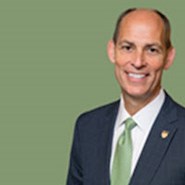
By Mona Savino & Thomas Smith, III
Situation
Two members of ASCE were investigated by the Committee on Professional Conduct (CPC) for conduct arising from the same set of circumstances. One member was the vice president of an engineering firm; the other was the chief executive officer of that firm. Their cases were considered separately by the CPC.
The vice president's primary responsibility was to check and prepare the firm's invoices, which were prepared in part by referring to hours billed on the firm's time sheets. As the firm grew, the owners instituted a policy whereby all timesheets were to be completed in pencil. This was due to the fact that many time sheets required corrections; for example, the hours worked would be incorrect or hours would be billed to an incorrect job number. Because it was too time consuming to send the time sheets back to the individual engineers for correction, the vice president made the corrections himself. The vice president testified that although this policy was instituted for legitimate reasons, it created an environment that was conducive to improper conduct.
Over time, the member was instructed by the firm's owners to alter the time sheets for reasons that were not legitimate. He was told, for example, to increase the hours billed to particular jobs or to charge hours to overhead in instances where the funds for a particular job had been expended. This practice was followed in about 1 percent of the firm's billings. The member also testified that it was company policy to record only eight hours worked even though in many cases more hours were actually worked. He thought that it would be proper to change the time sheets to reflect the actual time worked, and he began doing so. In some instances, however, the additional hours he added to the time sheets had not actually been worked.
The member was prosecuted in U.S. district court and pleaded guilty to making a false statement. He was sentenced to three years of probation and fined $2,000. He was also placed on one year of probation by the state licensing board and given a letter of reprimand. Additionally, he was investigated by a federal agency that was considering barring him from working on projects sponsored by that agency. However, the agency ultimately determined that such debarment was not warranted.
The chief executive officer of the firm, the other person being considered here, pleaded guilty to the charge of making a false claim upon the United States. As part of the plea, he acknowledged that his time sheets did not always reflect the actual amount of time he had spent on the projects. He was sentenced to probation, time in a halfway house, home detention, and community service and was ordered to pay substantial fines and make restitution.
Question
Did the engineers violate ASCE's Code of Ethics by acting in the way described?
Discussion
According to canon 6 of the Code of Ethics, "Engineers shall act in such a manner as to uphold and enhance the honor, integrity, and dignity of the engineering profession." The guidelines for practice in the code for category (a) of canon 6 read as follows: "Engineers shall not knowingly act in a manner which will be derogatory to the honor, integrity, or dignity of the engineering profession or knowingly engage in business or professional practices of a fraudulent, dishonest, or unethical nature."
The CPC concluded in the first case--that of the vice president--that the engineer violated canon 6 and category (a) in the guidelines for practice for that canon and forwarded the case to the Executive Committee of the Board of Direction. The CPC recommended that a letter of admonition be sent to the member and that an account of the case and of the action taken be published by the Society without mentioning the member's name.
As permitted by subsection 3.0.8 of the Society's rules of policy and procedure, the member signed a consent agreement admitting the facts and waiving his right to be present at the hearing and to mount a defense. The Executive Committee accepted the recommendation of the CPC. Had the Executive Committee not taken the recommended action, the consent agreement would no longer have been valid, and the member would have been entitled to be present at the hearing and mount a defense.
In the second case-that of the chief executive officer-the CPC concluded that here too the member was in violation of canon 6 and category (a) in the guidelines for practice for that canon and forwarded the case to the Executive Committee. The CPC recommended that the member be expelled from the Society with the right to seek reinstatement after three years. The member appeared at the hearing and presented evidence that he did not direct anyone to fraudulently bill the government and did not conspire with anyone to do so. He also testified that he was not responsible for the billing processes. This explanation was consistent with the other member's testimony that it was a different owner who instituted the practices. (That owner was not an ASCE member and received more severe criminal punishment.) The chief executive officer also testified that the quality of his work was never questioned by the government and that no client had ever stopped his work.
The Executive Committee determined that the member nevertheless was responsible as the chief executive officer of the firm and had violated canon 6 of the code. It voted to suspend him from the Society for three years. This action was published in Civil Engineering magazine without giving the member's name.
© ASCE, ASCE News, August, 2005



